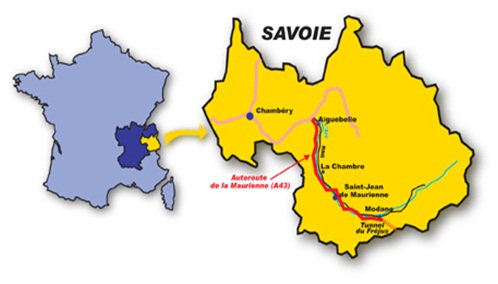Description
Description of the axis
The Fréjus tunnel has been connecting the French department of Savoie and the Italian region of Piedmont since 1980. Since then it has become the main route for road traffic crossing the northern Alps. The Fréjus tunnel, which is 12.87 km long, runs between Modane (France) and Bardonecchia (Italy). It consists of a single tunnel bore on which two 3.55- metre wide lanes carry two-way traffic. The usable width between the footways on either side is 9 metres. The French and Italian tunnel mouths are situated at nearly the same elevation, i.e. 1,228 and 1,297 metres respectively.
The longitudinal profile shows that there is a small descending gradient of 0.54% in the direction France-Italy.
Access to the Fréjus road tunnel:
- on the French side, by the A 43 motorway starting in Lyon.
- on the Italian side, by the A32 motorway starting in Turin.
Average daily traffic volumes*:
- light vehicles : 2,449
- HGVs and coaches : 2,058
- Total : 4,507
* Data 2010.
In 1981, light vehicles accounted for almost 80% of traffic in the Fréjus tunnel. After improvements were made to the access roads, the proportion of light vehicles decreased as that of HGVs increased. By 2010, light vehicles represented only 54% of total traffic.
Historical background
Tunnelling work started in 1974. A vast undertaking, the construction of the tunnel took almost five years until completion. The French and Italian tunnelling crews broke through in April 1979, and civil engineering work was terminated in July of that year.
This new passage through the Alps was officially opened to traffic on 12 July 1980. Turin was now only a three-hour drive away from Chambéry. Initially, owing to regulations on the Italian side, the tunnel was open to light vehicles only. Several months later, in October 1980, the first HGVs were at last allowed to transit through the tunnel.

